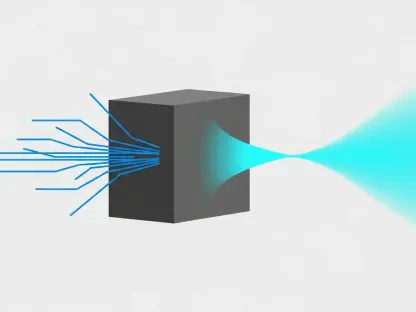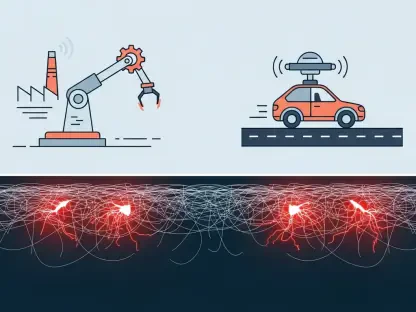The Dielectric Resonator Antennas (DRAs) market is experiencing unprecedented growth, driven by the rapid adoption of 5G networks and expanding military applications. Initially valued at USD 7.09 billion in 2023, the market is projected to reach USD 20.34 billion by 2032, reflecting a compound annual growth rate (CAGR) of 12.47%. This surge underscores the increasing demand for high-frequency antenna technologies in advanced telecommunications and defense sectors.
The Role of 5G in DRA Market Expansion
The global rollout of 5G networks is a significant driver of the DRA market. With over 230 commercial 5G networks in operation worldwide, the demand for high-speed, low-latency communications has never been higher. DRAs are essential in supporting these networks, providing the necessary bandwidth and efficiency to handle the exponential increase in mobile data consumption, which averaged 15 GB per person per month in 2023. This transformation in the telecommunications landscape is a key factor in bolstering the market’s growth trajectory.
Global Adoption of 5G Networks
The global adoption of 5G networks is vital in shaping the future of telecommunications, creating a high demand for advanced antenna technologies. As more countries deploy 5G networks, the necessity for antennas that support high-speed data transfer and lower latency has become critical. DRAs, with their superior performance and efficiency, are at the forefront of this transformation, ensuring reliable connectivity and endless possibilities for innovation in telecommunication services. These networks have revolutionized how users interact with technology, demanding robust infrastructure to support burgeoning mobile data traffic.
Impact on Mobile Data Traffic
Video streaming, which accounts for about 80% of mobile data traffic, has further emphasized the need for DRAs. These antennas are crucial in ensuring seamless, high-quality streaming experiences, making them indispensable in the telecommunications industry. As more consumers and businesses rely on 5G for their daily operations, the demand for DRAs is expected to continue its upward trajectory. The proliferation of video applications necessitates antennas that can handle increased data throughput without compromising on quality, driving the persistent need for DRAs in modern communication systems.
Military and Defense Applications
The military sector is another significant contributor to the DRA market’s growth. DRAs’ compact design, high efficiency, and ability to handle substantial data volumes make them ideal for secure communication systems. Defense contractors like Lockheed Martin and Raytheon rely on these antennas for their advanced radar and surveillance technologies, ensuring secure, high-frequency interactions. These attributes position DRAs as crucial components in fortifying national defense systems and enhancing the capabilities of military operations across the globe.
Secure Communication Systems
In the realm of secure communications, DRAs provide unmatched performance and reliability, critical for mission success in military operations. The antennas facilitate efficient data exchange, crucial for real-time decision-making and effective command and control. Their ability to operate under various environmental conditions and maintain resilience in hostile scenarios ensures that military forces have consistent and secure communication channels. This capability is vital for strategic operations, providing an edge in both offensive and defensive military tactics.
Enhancing Military Infrastructure
DRAs are also pivotal in enhancing military infrastructure. Their superior quality factor and high radiation efficiency make them suitable for applications where precision and minimal interference are essential. As military technologies continue to evolve, the reliance on DRAs for secure communications and surveillance is expected to grow, further driving market expansion. These advancements in military applications underscore the growing importance of DRAs in maintaining operational superiority and ensuring the effectiveness of various defense mechanisms.
Key Market Players
Several key players dominate the DRA market, each offering unique products catering to diverse industry needs. Notable companies include Antenna Company, CommScope, TE Connectivity, Laird Connectivity, Molex, Taoglas, Amphenol Antenna Solutions, Rogers Corporation, Cobham Antenna Systems, KYOCERA AVX Corporation, Huawei Technologies, Radiall, Eaton, Alcatel-Lucent, RFS (Radio Frequency Systems), Belden Inc., Filtronic plc, Comba Telecom Systems, Yageo Corporation, and Qorvo, Inc. These companies are at the forefront of innovation, driving advancements and setting industry standards for DRA technology.
Leading Companies in the DRA Market
These leading companies have established themselves through consistent innovation and a commitment to quality. For instance, companies like CommScope and Huawei Technologies have made significant strides in developing antennas that cater to both civilian and military applications, addressing the diverse needs of their clientele. The competitive edge these companies maintain is a result of their ability to adapt to market demands and continuously enhance their product offerings, ensuring they remain relevant in an ever-evolving technological landscape.
Innovations and Product Offerings
Companies continuously innovate to meet the growing demand for DRAs. For instance, KYOCERA AVX has expanded its KAM Series automotive MLCC offerings, while Kyocera Corporation and KAVX have introduced new product integrations aimed at enhancing their ceramic capacitor technology. Such advancements are crucial in maintaining a competitive edge in the rapidly evolving DRA market. This focus on innovation not only fosters market growth but also ensures that antennas keep pace with the technological advancements seen in telecommunications and military sectors.
Market Segmentation
The DRA market is segmented by type and application, highlighting specific areas of growth and development. Each segment presents unique opportunities and faces distinct challenges, driving innovation and market expansion. Understanding these segments offers insights into the strategic priorities and investment directions within the industry. Companies focusing on these segments can tailor their strategies to maximize their market presence and enhance their competitive advantage.
By Type: Rectangular DRAs
Rectangular Dielectric Resonator Antennas held over 56% market share in 2023. Their versatility and robust performance in high-frequency applications make them a preferred choice for aerospace and military applications. These antennas are favored for their superior quality factor and high radiation efficiency, making them ideal for precision-demanding environments. Additionally, their structural integrity and design flexibility allow for customization in various high-stakes applications, ensuring optimal performance and reliability.
By Application: Military
The military segment led the DRA market with over 57% market share in 2023. DRAs are essential for secure communications, radar, and surveillance technologies, which are critical for defense contractors. Their compact design, efficiency, and environmental resilience make them indispensable in military applications, driving significant market growth. The continued emphasis on enhancing defense capabilities and adopting cutting-edge technology underscores the growing reliance on DRAs in military operations.
Regional Analysis
The DRA market is geographically diverse, with notable regional trends influencing its growth. Each region presents unique market dynamics and growth drivers, such as technological advancements, government policies, and industry demand. Regional analysis helps in understanding the broader market landscape and tailoring strategies to meet regional requirements, ensuring comprehensive market coverage and strategic growth.
North America: Leading the Market
North America commanded a considerable market share in 2023, driven by a strong telecommunications infrastructure, substantial 5G investments, and extensive military applications. Major players in the U.S. and Canada are integrating DRA technology to enhance signal strength and coverage, particularly in densely populated urban settings. The region’s technological advancements and strategic defense initiatives make North America a pivotal market for DRA technology.
Asia-Pacific: Fastest-Growing Region
The Asia-Pacific region is projected to be the fastest-growing market from 2024 to 2032. Investments in 5G infrastructure in China, Japan, and South Korea are stimulating demand for DRAs. Additionally, the development of military technologies in these nations is significantly augmenting market expansion. The adoption of DRAs for both telecommunications and defense applications underpins this growth, highlighting the region’s dynamic and rapidly evolving market landscape.
Future Trends in the DRA Market
Several emerging trends are set to shape the future of the DRA market, driven by technological advancements and changing industry needs. Understanding these trends is crucial for stakeholders to align their strategies and capitalize on emerging opportunities. These trends also reflect broader changes in technology and society, underscoring the evolving nature of the DRA market and its potential for continued growth and innovation.
Integration with 5G and Beyond
The deployment of 5G networks has significantly driven the need for efficient antenna systems, as these networks require higher frequencies for faster data transmission and better connectivity. DRAs, known for their efficiency and compact design, are perfectly suited to meet these demands. Simultaneously, military applications are increasingly relying on DRAs for sophisticated communication systems, unmanned vehicles, and other advanced technologies. The growth of this market also reflects a broader trend towards the adoption of cutting-edge technologies in various sectors, ensuring enhanced performance and reliability across critical applications.









